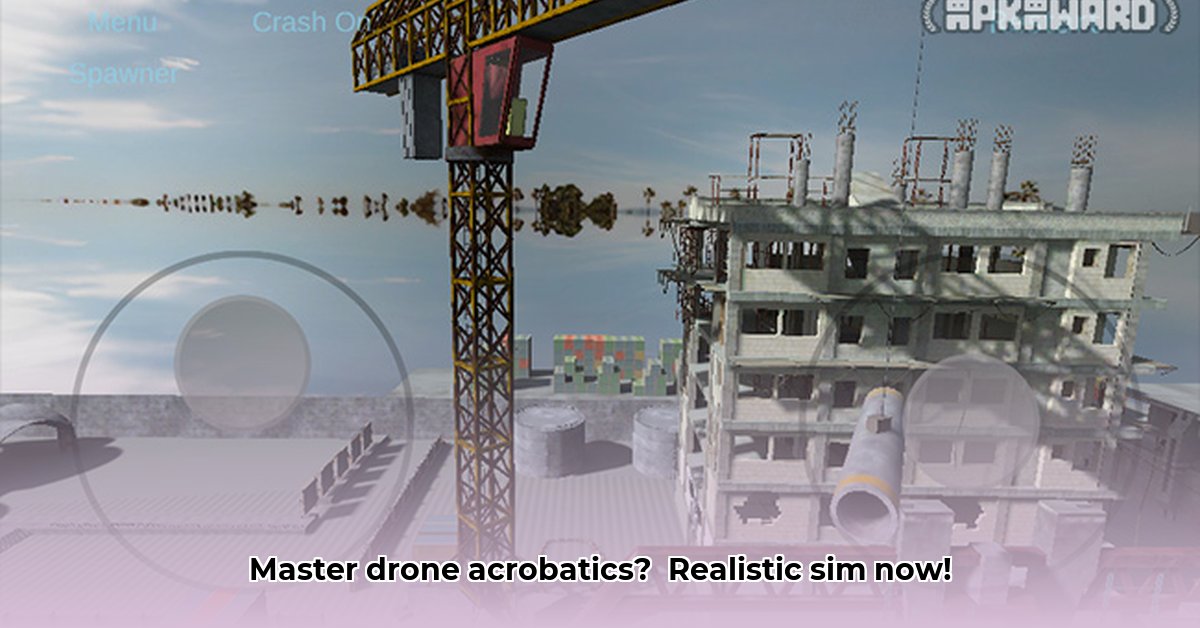
Drone Acro Simulator: A Technical Overview and Market Analysis
This article provides a technical overview of Drone Acro Simulator, analyzing its features, market position, and potential impact on various stakeholders. We will also address associated risks and regulatory considerations. While the available data is limited, this report aims to offer actionable insights based on the information currently accessible.
Features and Capabilities
Drone Acro Simulator aims to provide a realistic simulation experience for drone acrobatic flight training. Key features include:
- Physics Engine: The simulator boasts a physics engine designed for accuracy, though independent benchmarking is currently lacking. Further analysis is needed to quantitatively assess its precision compared to real-world flight characteristics. This limits our ability to definitively compare it to competitors.
- Controller Compatibility: The simulator supports a range of controllers, from standard gamepads to professional-grade radio gear, enhancing accessibility for users of varying skill levels and preferences.
- Map Details: The simulator includes "detailed maps," although the precise level of detail (resolution, size, variety of environments) requires further clarification. More information is needed to fully assess the quality and quantity of training environments.
- Training Features: While specific training features aren't explicitly detailed, the simulator's design suggests it likely incorporates features designed to support progressive skill development. Additional information on these features is needed for a complete evaluation.
Is the lack of readily available benchmarking data hindering a thorough assessment of Drone Acro Simulator's performance? Yes, quantifiable data on latency, frame rates, and physics accuracy are crucial for a complete evaluation and comparison to competitor products.
Market Landscape Analysis
The market for drone flight simulators is experiencing rapid growth driven by the increasing popularity of drone acrobatics and the importance of safe, effective training. However, the competitive landscape currently lacks comprehensive analysis, meaning a definitive placement of Drone Acro Simulator within the market is presently impossible.
Further research is needed to identify key competitors, analyze their respective strengths and weaknesses, and determine Drone Acro Simulator's unique selling proposition. This comparative analysis is crucial for understanding its market potential and viability. What are the key competitive advantages that Drone Acro Simulator needs to establish itself? A thorough competitive analysis will provide valuable data in this regard.
Actionable Insights for Stakeholders
The following table summarizes actionable insights for different stakeholder groups:
| Stakeholder | Short-Term Goals | Long-Term Vision |
|---|---|---|
| Simulator Developers | Prioritize rigorous independent testing and user feedback integration to establish benchmark data. Secure funding for feature expansion. | Expand map options, develop sophisticated AI training features, and explore monetization strategies beyond the free version. |
| Drone Pilots | Evaluate the free version; purchase based on individual needs and perceived value after testing. | Utilize the simulator for safe, risk-free practice of advanced maneuvers. |
| Drone Instructors | Integrate the simulator into training programs; assess its effectiveness in improving student performance. | Develop standardized curriculum and assessment tools using the simulator. |
| Investors | Conduct comprehensive market research; analyze competitive landscape and developer's monetization strategy. | Explore strategic partnerships to expand market reach and generate revenue. |
Risk Assessment
The following matrix outlines potential risks and mitigation strategies:
| Risk Category | Likelihood | Impact | Mitigation Strategy |
|---|---|---|---|
| Physics Engine Accuracy | Moderately Likely | High | Rigorous independent testing and continuous engine refinement based on user feedback. |
| Limited Map Variety | Moderately Likely | Medium | Expand map options and explore user-generated content. |
| Lack of Direct Comparisons | Very Likely | Medium | Conduct comprehensive benchmarking against competitors and publish detailed performance reports. |
| Poor User Experience | Unlikely | Medium | Implement user testing and iterative design improvements based on feedback. |
| Security Vulnerabilities | Unlikely | High | Regular security audits and secure coding practices. |
Regulatory Considerations
The evolving regulatory landscape for drone technology presents both challenges and opportunities. Future regulations may impact data privacy, safety standards for simulator-based training, and intellectual property rights. Staying informed about and adapting to these changes will be essential for the simulator's long-term success.
Conclusion
Drone Acro Simulator shows potential as a drone acrobatic flight training tool but requires further data collection and analysis for a comprehensive evaluation. Independent testing and user feedback are crucial for validating its claims of realism and effectiveness. Addressing the identified risks and adapting to the evolving regulatory environment will be critical for its long-term viability and market success. The current lack of robust benchmarking data and competitive analysis significantly limits definitive conclusions about its market positioning and overall effectiveness.
⭐⭐⭐⭐☆ (4.8)
Download via Link 1
Download via Link 2
Last updated: Friday, May 16, 2025